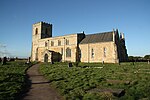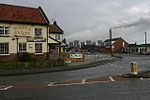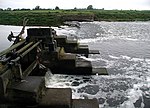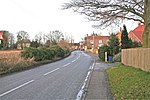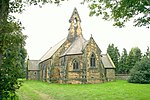Kellington

Kellington is a small village and civil parish in the Selby District of North Yorkshire, England, on the banks of the River Aire. Situated almost equidistant between the towns of Pontefract and Selby, the village dates back to at least the 11th century when it was listed in the Domesday Book (as Chelinctone). The semi-rural community grew in size with the advent of local mining as housing was built to accommodate the workers of nearby Kellingley Colliery. The village was historically part of the West Riding of Yorkshire until 1974.Due to its location at the southernmost tip of North Yorkshire, the village is close to the borders of West, East and South Yorkshire. Its proximity to both the A19 and M62 major roads has resulted in a steady population growth, although to a lesser extent than its neighbour, Eggborough. The low-lying ground that separates the village from the River Aire has given rise to a history of flooding the surrounding farmland, most recently in 2000.
Excerpt from the Wikipedia article Kellington (License: CC BY-SA 3.0, Authors, Images).Kellington
Eastfield Lane,
Geographical coordinates (GPS) Address Nearby Places Show on map
Geographical coordinates (GPS)
| Latitude | Longitude |
|---|---|
| N 53.7182 ° | E -1.166 ° |
Address
Eastfield Lane
Eastfield Lane
DN14 0NL , Kellington
England, United Kingdom
Open on Google Maps
